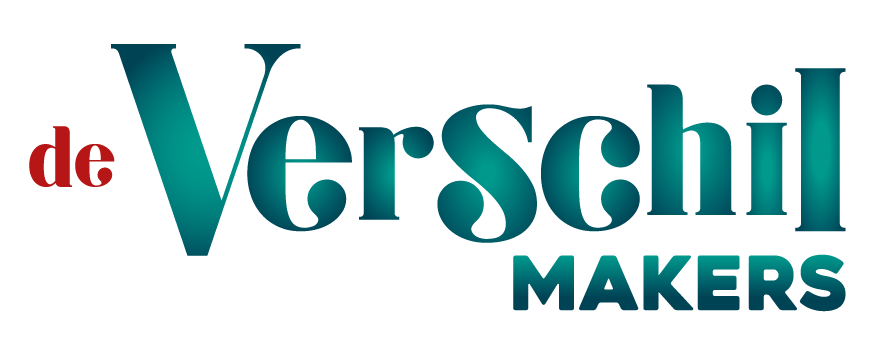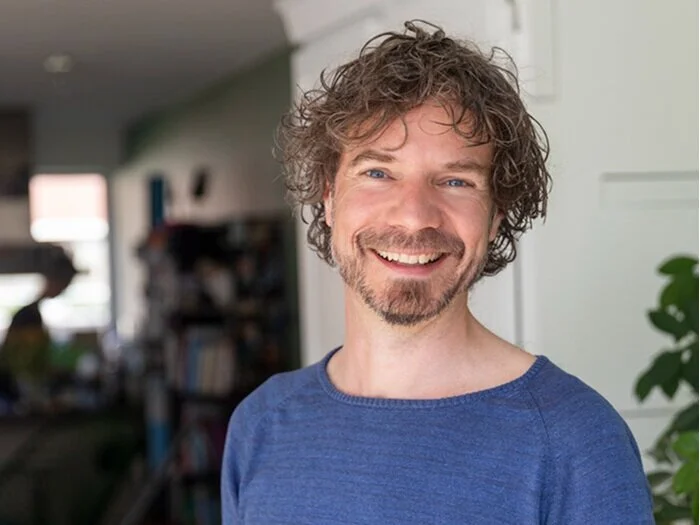The circular designer as a life cycle coach
Miquel Ballester Salvà - Circular Innovation Lead
Designer Miquel has always been interested in the power of sustainable design. He now views himself more as a coach. Fairphone’s modular phones are not only designed and produced according to circular methodologies but are aimed at changing behaviour among consumers and in the industry.
Which circular design principles do you apply? And how does this work in practice?
The circular economy often entails looking at the preservation of raw materials, recyclability and the end of a product’s useful life. Our guiding principle is an economy that takes account of environmental and social sustainability, namely the people and the working conditions. For Fairphone, this approach has led to the following four design principles:
Use eco-friendly materials
We use materials whose extraction benefits local communities and/or materials that are biobased or recycled. So long as we all continue our patterns of consumption, it will be impossible to use 100% recycled materials. The global demand for materials far outstrips the supply of recycled materials. We will, for example, have to mine increasing amounts of cobalt. We are therefore also working on mining projects that will help the local population develop. Our focus is not on finding the perfect mine – that’s a utopia – but on setting up an effective improvement project.
Design for the longest possible use
Our phones are both easy to repair and update; they’re worth holding onto. By adding a new back cover, we make the phone feel like new again, and we provide long-term software support and updates.
Design for reuse and recycling
Reusing materials without having to recycle them is ideal because it saves time, energy, CO2 emissions and money. That’s why we use modular design. With modular design, the phone is not only easy to dismantle, but the materials can also be recovered and reused. For each type of material, we carry out research to see how recyclable it is for a second, third and even fourth life.
Design with respect for good working conditions
Visit the factory and inquire about the conditions. We partner with our suppliers to improve the salary and employee representation. When you do that, it has a positive knock-on effect on things like working hours. Another advantage of an in-person visit is that you learn how a product is made. I was surprised at what I learned just by asking simple questions like: ‘What is easy and what is difficult to assemble?’ This always leads to improved designs.
You’ve done a lot of research into materials: how, why and what has been the benefit?
Together with The Dragonfly Initiative, we’ve developed criteria for prioritising which of the 38 metals used in a phone we want to take action on to make the chain more sustainable. We’ve examined how essential the materials are for a Fairphone, how polluting their extraction is and how recyclable the materials are. For example, a significant percentage of the cobalt used in our phones comes from our mining project based in Congo. In the future, we’ll increase the percentage of cobalt that’s recycled, and we’re also working on projects for tin, gold, plastic, etc
From your perspective, what is the role of the circular designer?
The circular designer is a life cycle coach who not only deals with the user’s customer journey, but also with the life cycle of a product’s materials, including the re-use, recycling, and so forth. The designer understands the environmental and social consequences of every decision he or she makes about the materials. This means you have to explore the impact of the material extraction, the impact of the production and transport, the lifespan of the product and the options for the materials after their use phase. All of which is relatively easy to figure out through a so-called life cycle analysis (LCA), which lists all these elements so you can make your own assessment. This type of analysis is a powerful tool for designing life cycle strategies. With the aid of this tool, we know that the production of the phone’s plastic back cover generates 0.3% in CO2 emissions. Ordering a new back cover results in a small additional emission, but it makes your phone feel new again, which hopefully stimulates a customer to keep the phone longer. If you use a phone for five years rather than three, you save as much as 30% in CO2 emissions. Designers are also responsible for every part of a product, including the invisible ones, not just those on the exterior
“Designers are responsible
for every part of a product,
including the invisible
ones, not just those on the
exterior.””
Designers no longer focus solely on the first user of their product, but on the end of the product’s use period. The end of the useful life should be just as exciting as the beginning. Even when you design for the long term, products age and wear out; it’s inevitable. When designing a product, we need to keep in mind both the aging process and the end of its life. The conclusion of the product’s useful life should involve an interesting experience, a positive end ritual. This could include dismantling instructions for the customer for better recycling or receiving a gift when you return your product to the supplier.
Finally, a circular designer must also design services. If we truly want to use fewer raw materials, we need to consume less and, as product producers, we need to make the switch to services. After all, the most sustainable product is the one you don’t buy. So at Fairphone, we’re researching whether it’s profitable to offer our phones in a service model, by designing a more robust phone for instance. This requires a designer to think more strategically and integrally, to take more account of the rest of the organisation and the client, and to design processes while keeping product returns and repairs in mind.
““As long as we all continue
our patterns of consumption, it
will be impossible to use 100%
recycled materials.””
Can you identify a dilemma you’ve encountered during the design process?
Due to its circular design, our phone emits 12% more CO2 because it requires additional parts. We compensate for these extra emissions by ensuring the device lasts longer, because it is easier and cheaper to repair. Therefore, the emissions are 30% lower for the entire service life of the product. You have to embrace dilemmas like these, make them explicit and then share them with your customers by telling an honest story.
What are your ambitions for the future?
““The circular designer is a life cycle
coach who not only deals with the
user’s customer journey, but also
with the life cycle of a product’s
materials, including the re-use, recycling, and so forth.””
Our goal is not to create a 100% fair phone, and our ambitions are not limited to developing a phone that’s modular, repairable and recyclable. We want to inspire the industry and change it. We typically start with a single supplier with whom we set up innovative improvement projects that can be replicated by the rest of the industry. The aim is for the electronics to last longer, so they will not have such a detrimental effect on our environment.
What tips can you offer other designers?
As a designer, I think the two most important books to read are ‘Products that last’ and ‘Managing Obsolescence’. One interesting tool is the Ecolizer from OVAM (Openbare Afvalstoffenmaatschappij voor het Vlaamse Gewest). This handy guide for designers contains hundreds of eco-indicators that illustrate the scope of the environmental impact of the materials, treatment processes, transport, energy, recycling and waste processing. The higher the score, the greater the environmental impact.
Fairphone is building a market for ethical phones while motivating the industry to act more responsibly. It designs, produces and sells smartphones, making the supply chain behind the phone transparent, raising awareness of the most urgent issues, and proving it is possible to do things differently. Fairphone is working to make caring for people and the planet a natural part of doing business.












